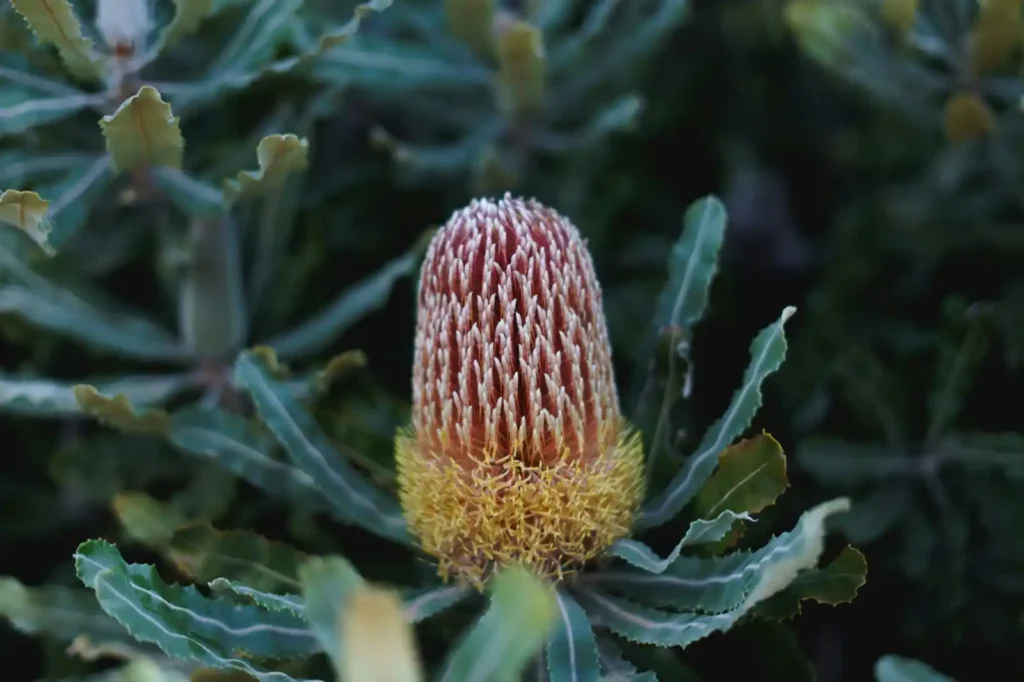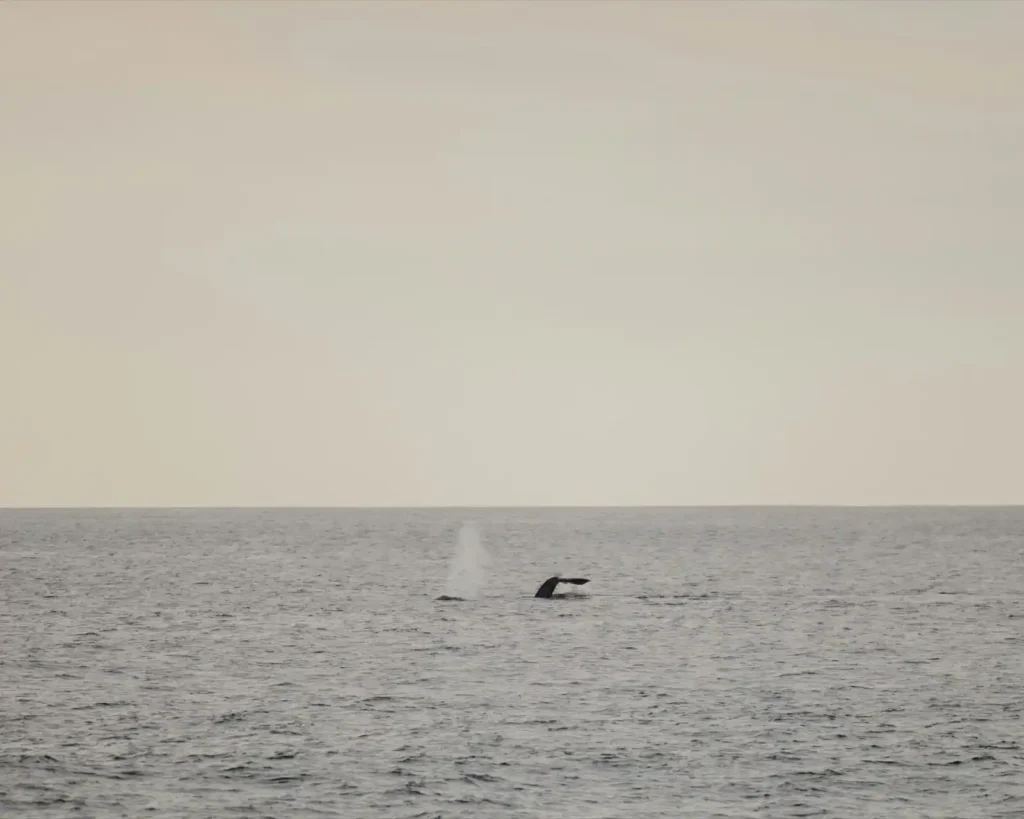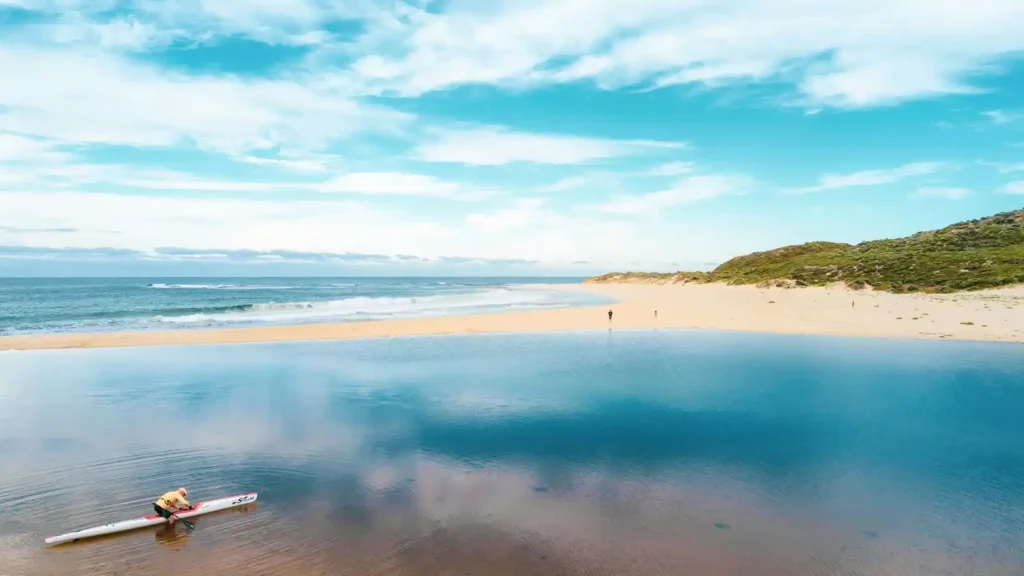“Now.” That was his response. And I could see what he meant, because merely asking my mate, a Margaret River local, when’s the best time to hike the Cape to Cape showed that I was nervous about the journey.
But maybe you’ve got time up your sleeve and want to plan your journey along one of the most famous hikes outside of Perth city. That’s not only fine, it’s wise. Because your experience on the Cape to Cape Trail—the southwest’s most arduous, challenging and breathtaking hiking trail—can depend on so many factors: the temperatures, the rainfall, the wind, the trail traffic and so much more.
Did I go at the right time? I’ll answer that later, because my mate’s advice to seek completion, not perfection, outweighed the desire to find the perfect weather window.
The best time to hike the Cape to Cape is a loaded topic, so let’s get to it.
We acknowledge the Cape to Cape track is situated on Wadandi Boodja, the traditional land of the Wadandi (Saltwater) people.
Define the “best time of year”

Every hiker has their own definition of the best time of year to hike long trails, and in the southwest it’s no different. The best time to hike the Cape to Cape track depends on your preference of temperature, sights, challenge and even volume of fellow hikers on the trail.
Here’s a quick breakdown of the four seasons to hike the southwest’s longest hiking trail, and why each part of year will see happy hikers on the Cape:
- Summer: Stifling hot days, balmy nights
- Autumn: The most popular time to hike the Cape to Cape
- Winter: Cooler temps and firmer sand
- Spring: Wildflowers, whales and warmer days
Get your free Cape to Cape Track Map here
Free to download, our beautifully designed map of the Cape to Cape Track, the southwest’s most premier and longest trail, is yours to download. No email required, just click here and enjoy digesting the best stops along the Cape to Cape Track.
Summer: Stifling hot days, balmy nights
Months: December to February
Summer on the Cape to Cape Trail is not for the faint-hearted. With temperatures often soaring above 30°C, the trail presents a challenging environment for hikers. The intense heat and high UV levels mean careful planning and preparation is in order.

Early starts and frequent breaks
To reduce the risks the summer heat brings, I’d advise to start hikes at dawn and take long breaks during the peak heat of the day. It’s safer this way and you’ll also enjoy the journey far more. After all, that’s what it’s all about, and the time-outs mean you can take in the incredibly scenery the Leeuwin-Naturaliste Ridge has to offer.
Resupply points
Water scarcity is a significant concern during summer. It’s essential that you carry sufficient water or plan resupply points meticulously. You’ll need to consult maps or even local hikers to know where to stash your water supply, as dehydration can set in quickly under the relentless WA sun. You’re probably already realising that hiking the Cape in summer means a lot more planning and preparation.
Unbelievable coastal landscapes
Despite the challenges, summer has its unique rewards. The coastal landscapes are bathed in brilliant sunlight, and the ocean’s turquoise hues are absolutely striking. Early morning hikes can produce stunning sunrises behind the ridgeline, making the early morning effort worthwhile.
Cape to Cape tip: An obvious point, but prioritise sun protection when hiking the Cape in summer. Wear SPF-30 (and above) sunscreen, stick on a wide-brimmed hat and don’t forget the UV-protective clothing. You’ll find plenty of shaded areas in the 123km journey but you’re often forced to hike long stretches of exposed beach: you’ll rely on your gear to avoid the sun in these common parts of the Cape to Cape trail.
Autumn: The most popular time to tackle the Cape
Months: March to May
Autumn, between March and May, is the most popular time to hike the Cape to Cape trail. The days are mild and the nights cool, and daylight stretches from about 13 hours in March to 10.5 hours in May. Above all, the track just looks amazing.

Perfect weather conditions
The weather conditions are their most predictable, with average highs of around 22°C, lows of about 10°C, and anywhere between three and 11 days of rain per month. This is ideal for hiking, as the blistering heat of summer is in your rearview mirror and the occasional drop of rain might even be welcomed as you sweat out volumes of water.
Banksias in bloom
A well-loved and recognised symbol of Western Australia, banksias are their most vibrant in Autumn in the southwest (62 of the 76 species are endemic to WA). There’ll be plenty of banksias and other red varieties of flower in bloom as you hike along the Cape to Cape trail between March and May. Contrast this with the glassy blue of the morning ocean, the yellow dirt on the track and the gorgeous blue sky above, and it’s a colour palette that’ll draw your breath quicker than any of the trail’s steep, sandy inclines.
Less need for extra hydration
Your need for additional water will be reduced when you hike after summer has passed. If you’re hiking unaided or not looking to stay in accommodation in any of the beautiful towns you’ll pass through on the Cape to Cape trail, you won’t need to stash water along the trail. It’s a big plus to hiking in Autumn in the south west.
Freedom to hike
For most, freedom is what makes Autumn the best time of year to hike the Cape to Cape trail, because you’re not restricted to hiking early mornings or late afternoons when the UV is at its highest. You’re free to hike any time of the day, without the pressure of escaping the sun.
Longer golden hours
Because of the angle of the sun, golden hours (the first and last moments of daylight) last far longer than other months. This is a dream for photographers hiking the Cape with a camera. Speaking of, autumn is the best time to see the aurora australis (the southern lights). Either way, you’ll be spoiled with incredible stargazing on your May to March trek along the Cape to Cape.
Cape to Cape tip: Don’t let the mild temperatures fool you as the mornings in the south west can be exceptionally cold. Pack smart for the trails, bringing your thermal wear for the nights and early mornings, and be ready to strip them off when the autumn mercury inevitably rises during the day.
Winter: Cooler temps and compacted sand
Months: June to September
To most, winter hiking just sounds miserable. But hiking the Cape to Cape in winter has its benefits.

UV is less feisty
West Australia’s sun is scorching in the heart of summer. Even on the fringe summer months, you can get yourself a solid burn or sun stroke if not careful. Winter offers a retreat from this, and of course, provides a cool break from the .
It doesn’t mean your back won’t be burning with sweat, as your pack presses into your saturated back. But hey, cooler temperatures are a benefit to hikers.
Firmer sand
Thanks to the frequent rainfall in winter, you’ll find the long sandy areas (okay, that’s the majority of trail between Cape Leeuwin and Cape Naturaliste) better packed and easier to trek over. The soft sand is one of the most challenging parts of the Cape to Cape, which is why many actually see winter as the best months to hike the long trail.

Cape to Cape solace
Trail traffic is a real thing among the popular southwest trails, and Cape to Cape takes the cake for it. That’s because not everyone is doing the entire route, with so many sections of the Cape to Cape prime for a short beach walk, a long trail run or just a gander at the surf. In winter months, this traffic is occasionally non-existent. You’ll see far fewer people in winter and feel as if the entire trail is yours. This is one of the reasons Margaret River has a tonne of hidden running trails.
Wild, raw scenery
In any month, the Cape to Cape displays incredible West Australian landscapes that’ll drop your jaw. But in winter, the ocean raws to life, the white caps heave and the grey clouds add a gloomy contrast to the lush green landscape that only adds to the experience. For me, winter is the month to be outdoors—nothing compares to sharing an adventure with the elements.
Don’t let this have you thinking that everyday in winter along the Cape to Cape is miserable and dire. West Australia’s winters are occasionally non-existent, especially compared to European, American or Canadian winters. You’ll likely enjoy just as many bluebird days as soggy ones when you’re trekking the Cape in winter.
Cape to Cape tip: If you choose to hike the Cape in winter, then consider hiking northbound. The southerly winds are exceptionally strong in the winter months, and hiking against the stiff wind may stifle your Cape to Cape experience. I remember taking in the views at Redgate in July and watching my wife hold her jacket against the southerly wind, bending from her ankles as if emulating Michael Jackson’s Thriller. I couldn’t imagine battling that wind for 123km.
Spring: Wildflowers, whales and warmer days
Months: September to November
Spring is arguably the most picturesque time to hike the Cape to Cape Trail. The landscape comes alive with a vibrant display of wildflowers, and the weather is generally mild and conducive to long hikes.

Biodiversity
As you’d expect in spring, the Cape to Cape trail is adorned with wildflowers, including orchids, wattles and banksias. This seasonal bloom transforms the trail into a colourful corridor, offering a feast for the eyes. It’s a photographer’s paradise.
Ideal hiking conditions
Spring temperatures typically range between 15°C and 25°C, literally no better hiking conditions. The days are longer, offering plenty of daylight to cover significant distances without the pressure of racing against the setting sun.
The whale highway
Spring is prime time to catch the tail end of the whale migration, one of the many effects of the Leeuwin Current. Between September and early December, southern right and humpback whales can be seen breaching, tail-slapping or cruising close to the shoreline as they return south with their calves. There are plenty of clifftop sections along the Cape to Cape trail that double as incredible whale-watching vantage points—especially between Contos and Redgate (where you’ll find some incredible Margaret River camping trails), and around Hamelin Bay.
Active wildlife
With the arrival of spring, wildlife activity increases. Birdsong fills the air, and sightings of kangaroos, emus and other native fauna become more common. Wildlife sightings are common in the southwest, and part of the experience exploring this stunning land. That of course means you should be on the lookout for snakes (snake garters are highly recommended for the bushier sections of the track).
Cape to Cape tip: Carry a field guide or download a plant identification app to get more out of the wildflower bonanza. And if you’re hiking the Cape to Cape in October or November, bring a pair of compact binoculars—you might just spot a whale tail breaking the surface as you look out across the Indian Ocean.
Final advice on choosing the best time to hike the Cape to Cape
With an opening in my work schedule, I chose mid-May to hike the Cape. This was when the hardiness of WA’s winter hadn’t fully set in, the smell of autumn was still in the air and the conditions—especially in the mornings—were prime for marching part of the 123km between the lighthouses at Cape Leeuwin and Cape Naturaliste.
I loved every minute and every challenge that Autumn threw my way: the rain was heavy this particular year, meaning we needed help from a few local kayakers crossing the Margaret River Mouth, just north of Surfer’s Point. We’d also planned to abseil down the rocks at Wilyabrup cliffs, and the slippery boulders made it an experience I’ll never forget (appreciation for two feet on flat ground will never be as high as the moment I finished my descent).

In our four-day experience, not once did I regret going earlier in Autumn or in the dry heat of summer. The rain, the wind at our backs, the cloudy gloom that occasionally blanketed us, made the sunshine and blue skies that much more appreciated when they came out. Plus, there were fewer people on the trail—this made for an emotional experience, because while all my colleagues were busy at work, I was getting in touch with my primal side, feeling as if I were migrating across vicious lands to a destination that called to me with each step. Indeed it did, with my wife there to greet me at Cape Naturaliste lighthouse.
At the end of the day, what’s the best time to hike the Cape to Cape track? I’ll quote my mate who I’d asked the same question to many months ago: “Now!”
Check out our adventure guides for more great Inspo for your next West Australian adventure.



